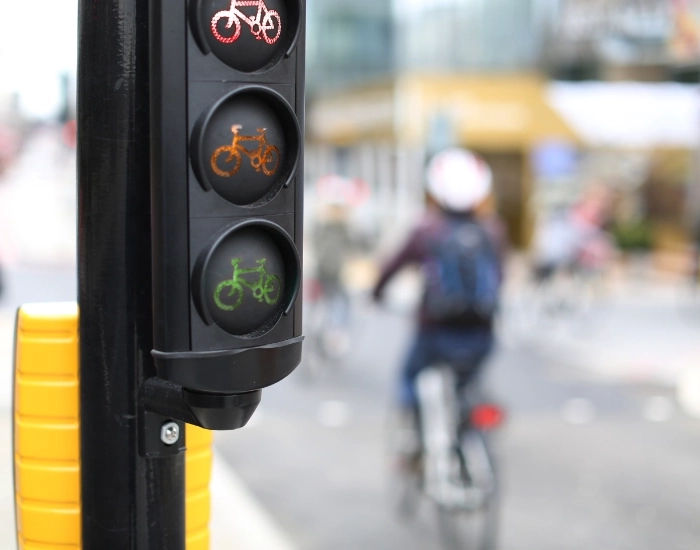
Cycling accidents can occur for various reasons, including a cyclist's failure to comply with traffic laws. One common offence is running a red light, which refers to crossing a junction while the light is red. While this is a punishable offence, you may still be able to claim compensation if you're injured, even if you ran a red light. Here's how it works.
What does the law say about running a red light?
Running a red light is illegal under the Road Traffic Act 1988 s.36 and the Traffic Signs Regulations and Directions 2002 regulations 10 and 36(1). The offence can lead to fines of up to £1,000 and penalty points on a driver's license.
For cyclists, the penalty is typically a £30 Fixed Penalty Notice. Despite the law, many cyclists continue to ignore red lights, and thousands are fined annually for this offence.
Duty of care
All road users, including cyclists, have a duty of care to others. This means they must follow traffic signals and rules to avoid causing harm to themselves or others. Running a red light can have serious consequences.
For example, a cyclist in 2013 was jailed for 12 months after failing to stop at a red light and colliding with a pedestrian, causing grievous bodily harm.
Can I still claim injury compensation if I ran a red light?
Yes, you may still be able to claim compensation even if you ran a red light, but your compensation could be reduced due to contributory negligence. This legal principle means that if your actions partly caused the accident, your compensation will be adjusted to reflect your share of the blame.
For instance, if another road user also contributed to the accident, you could still be entitled to compensation. However, your actions - such as running the red light - would be considered when determining the amount you receive.
Read more about contributory negligence.
Real-life examples
In one case, both a cyclist and a truck ran a red light, leading to a collision. Although the truck driver was also found at fault, the cyclist's compensation was reduced due to contributory negligence for running the red light.
In another example, a cyclist ran a red light and collided with a taxi crossing the junction on a green light. The taxi was speeding, traveling between 41-50 mph in a 30 mph zone. The court ruled that both the cyclist’s failure to stop and the taxi driver's excessive speed were contributing factors to the accident. The cyclist’s compensation was reduced due to contributory negligence, but they still received some compensation for their injuries.
How is compensation reduced in contributory negligence cases?
When contributory negligence is established, the court will assign a percentage of responsibility to each party involved.
For example, if you were found to be 30% responsible for the accident due to running a red light, your compensation would be reduced by 30%. The remaining 70% of the compensation would be awarded based on the other party’s fault.
Summary
Cyclists are legally required to follow traffic rules, including stopping at red lights. Running a red light increases the risk of accidents and can affect your ability to claim full compensation if you're injured. However, if another party is also responsible for the accident, you may still be entitled to some compensation, though it will likely be reduced due to contributory negligence.
How Cycling Injury legal can help
If you were injured while running a red light, you may still have a valid claim. Our experienced team understands the complexities of contributory negligence and can assess the extent of the other party's liability. We’ll help you navigate the process, ensuring you get the compensation you need.
The first step is to consult with a no win, no fee solicitor to understand your options and ensure you receive fair compensation, even if you were partly at fault.

 Written by Chris Salmon on 23rd June 2023
Written by Chris Salmon on 23rd June 2023